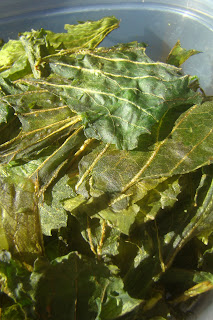
The first few months I was on the
GAPS diet, I felt like I was on cloud-nine. I felt amazing, and was so happy to be free from the joint pain that had plagued me for nearly a year. After about 5 months on the diet, I started to notice some energy problems. Specifically, I started having spells of extreme lethargy and fatigue. Like, "I need to go lay on the floor for awhile" and "I can't keep my eyes open". After a bit of experimenting, I figured out that this problem was caused by eating too few carbohydrates.
Is the GAPS Diet Low-Carb?
The GAPS diet is
not necessarily a low-carb diet. Fruits, veggies, lentils, white beans, and honey are all allowed on the diet. But, I've tended to shy away from things like lentils and white beans while on
GAPS because they can cause digestive upset for some of the other members of my family. I also tend to not each much fruit, as I don't really crave sweet things like I used to years ago. So for me, the GAPS diet can easily be very low carb.
Who Needs Carbs?
Other popular low-carb diets, such as Primal and Atkins, are quick to point out that people do not
need carbs, since the body can manufacture them from other energy sources. However, it became clear to me that I
do need plenty of carbs to have normal energy levels.
My daughter and husband, who are also on the GAPS diet, have not had the same energy complaints. It seems that perhaps being a woman, or specifically being a breastfeeding mother, can cause me to need more carbs. Or who knows, maybe it has to do with the foods my ancestors ate for thousands of years. Whatever the cause, it is clear that I can't follow a low-carb diet without having energy problems. I do know that there are plenty of other people, women specifically, who have complained of energy problems on GAPS.
Carbs and Adrenal Fatigue
Recently I've noticed that some of my old
adrenal fatigue symptoms have been coming back: balding lower legs, vertical lines on the inside of my fingertips, and cold hands. As I've been researching the cause, I've learned that eating a low-carb diet can tax the adrenal glands! When the diet is low-carb, the adrenals have to keep sending out hormones to signal the liver to release glucose. I'm thinking that the return of my adrenal problems signals that I still haven't been eating enough carbs while on GAPS to properly nourish my body.
Steady Energy
To keep the energy levels more steady throughout the day, I'm eating more carbs. I include at least one of the following with each meal:
- Milk kefir or plain yogurt
- Winter squash, such as butternut or spaghetti: These seem to be fairly high in carbs compared to other veggies.
- Lentils
- White navy beans
 Energy Boosts
Energy Boosts
To deal with any spells of extreme lethargy or fatigue, I find that eating one the the following helps.These give a quick energy boost and chase that lethargic feeling away.
- Fruit: I generally eat at least 3-4 pieces each day while on GAPS. Apples, pears, bananas, oranges, cherries, and blueberries all seem to work well for a quick energy boost.
- Macaroons: I keep a stash of frozen macaroons in the freezer. If I get that awful lethargic feeling, I'll go eat one right away.
- A small spoonful of honey
Have you had any energy problems while on GAPS or a low-carb diet? What has helped?
This post is part of
Frugal Days, Sustainable Ways,
Fat Tuesday and
Monday Mania!












